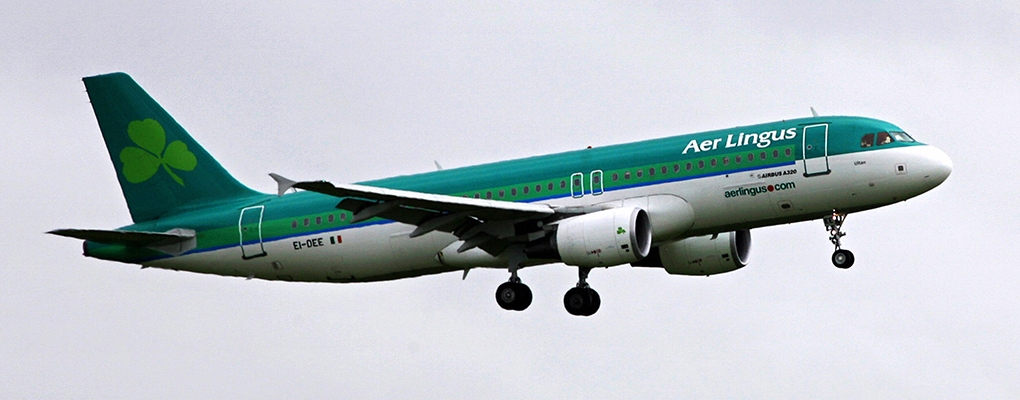
On January 1 1914, Abram Pheil flew as a single passenger on the first scheduled commercial flight of its kind across Florida. A century later, on January 1 2014, it’s estimated eight million passengers flew on nearly 100,000 commercial flights around the world. Airports, originally little more than grassy fields, have become bustling hubs for tourism and the playing field for airlines to battle for a share of the 3.3 billion annual passengers. Over the past decade a number of mergers have taken place in the US that has halved the number of large carriers from eight to four.
Data from OAG outlines the clear difference in the European airline market, where 17 airlines battle for market share, compared to the US, where 10 firms make up the predicted airline traffic for 2015. Over 53 percent of the European market is shared between the top six airlines, whereas in the US 46 percent of the market is shared between the top two airlines. In Europe, consolidation has struggled to take hold. While large carriers have formed mergers, flag carriers and budget airlines are fuelling cut-throat competition on short-haul journeys. IAG has recently offered Aer Lingus a £1.1bn takeover bid that is widely considered the first significant airline consolidation deal in five years. This has signalled a resurgence of M&A across Europe.
Flag-carrier systems have created an abundance of airlines and have led to inefficient excess-capacity. These legacy airlines have large market positions from their government-affiliated status but they are being undercut by low-cost competitors. Operators are left with over capacity and profitability problems and unable to compete with the consolidation that has happened in the US market. This has primarily been due to differences in language, culture, political risks and government approach to the industry.
Flag-carrier systems have created an abundance of airlines and have led to inefficient excess capacity
Speaking to World Finance, James Halstead, Partner at Aviation Strategy said: “The European industry has been restricted by the continuing state ownership of these carriers by the countries. Where you have a problem with these airlines is because of restrictions in ownership and restrictions in services and the involvement of government. Do you want an airline that flies your flag or something that will be a profit?”
High fliers
Middle-east airline Etihad has taken up a 49 percent share in Air Serbia, this adds to its three percent share in Aer Lingus, 29.2 percent share in Air Berlin and 33.3 percent share in Swiss Darwin Airline. These shares allowed Etihad to acquire several significant hubs across Europe and participate in the European airline industry. SAS, the Scandinavian airline, has also been suggested as a potential takeover candidate with Lufthansa being speculated to acquire the airline. Finnair offers the shortest route from China to Helsinki and has set up a joint venture with Flybe for domestic services. The airline may consider a merge with IAG to aid with connections and retain operating independence.
IAG, formed from a 2011 merger of BA and Iberia, has already had two takeover approaches rejected by Aer Lingus with BA boss Willie Walsh first pitching €2.30 a share, then €2.40 and now €2.55. Acquiring Aer Lingus, with its highly sought after 23 takeoff and landing slots at Heathrow Airport in the UK, would be an attractive addition to IAG’s portfolio of airlines and enable them to develop Ireland into a transatlantic traffic hub. Qatar Airways has also recently announced purchasing a 9.99 percent stake in IAG, becoming its biggest shareholder. Qatar is just one of the gulf airlines challenging European carriers and, although non-EU ownership of European airlines is capped at 49 percent, should the Irish government back the IAG deal, the takeover would signal a step towards a European airline industry with just a handful of strong players.
There is also opportunity for consolidation amid Europe’s low-cost carriers. Wizz Air has revived plans for an initial share sale. The budget airline that operates within Eastern Europe could attract interest from Ryanair or EasyJet if it does issue stock. The success of low-cost airlines has boomed following EU deregulation and has forced the big airline groups to keep pace with the growing budget market.
Turbulent times
Despite incredible growth in commercial flights since 1914, airlines are failing to cover the cost of capital and companies are looking towards consolidation to increase their presence in key markets and pave their way in emerging ones. There is very little competition in the industries that supply airlines. Airbus and Boeing provide the vast majority of planes and terrorist attacks, global illness and rises in oil prices all make the industry more vulnerable.
Charlie Leocha, Director of Consumer Travel Alliance, said in a statement: “Internationally, only three airline alliances, each of which operates much like a single airline, control more than 80 percent of international traffic. This is not a healthy economic environment from a consumer point of view; it brings us only one or two mergers away from having a dominant national carrier.”
Consolidation in the European airline industry is on the rise but it is unlikely the notion will become an overnight solution. It will not sit well with regulators, who do not want to allow a monopoly, or the consumer, who will not want to suffer loss of choice and increased prices as a result. Both have to think about whether the need for consolidation outweighs the negatives, in an industry that is unable to sustain itself.
“The industry does not make returns on capital. From a consumer point of view it probably is better to have a consolidated market. Even though prices will rise it is better to have an industry that is sustainable,” said Halstead. “If the industry is in a position to consolidate, it will be in a position to sustain itself; this will have a beneficial effect on the global economy.”


